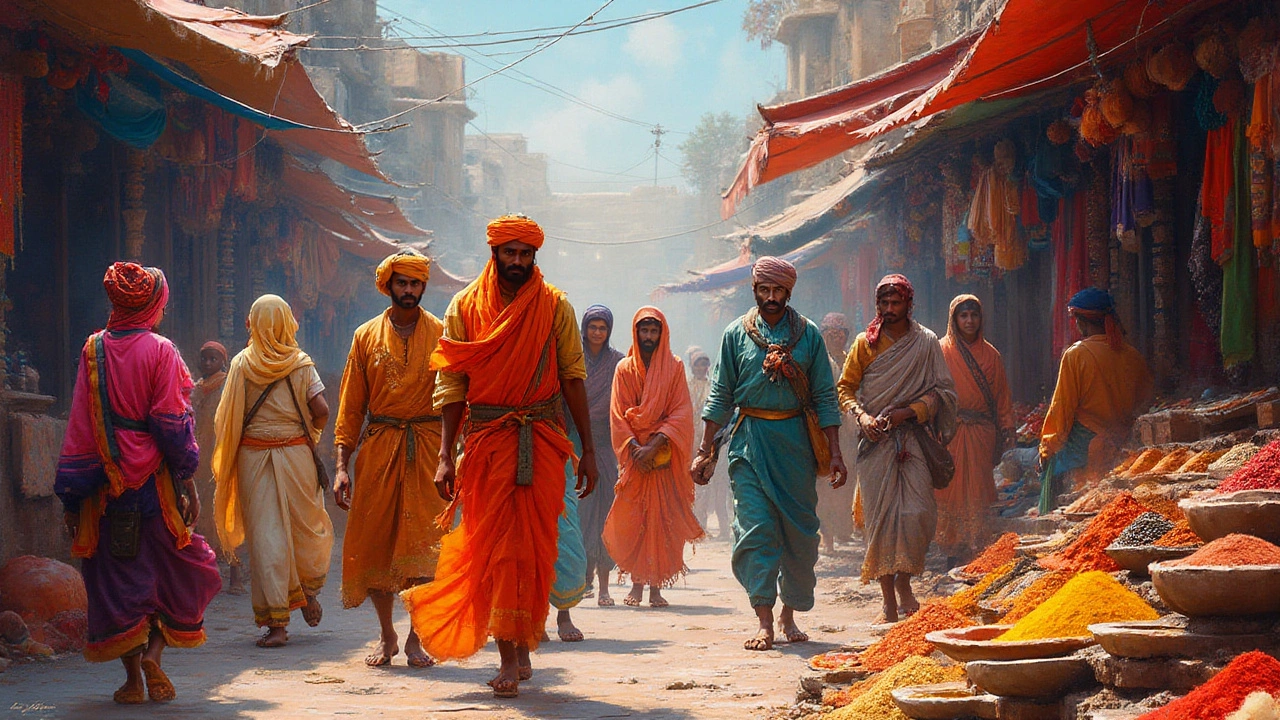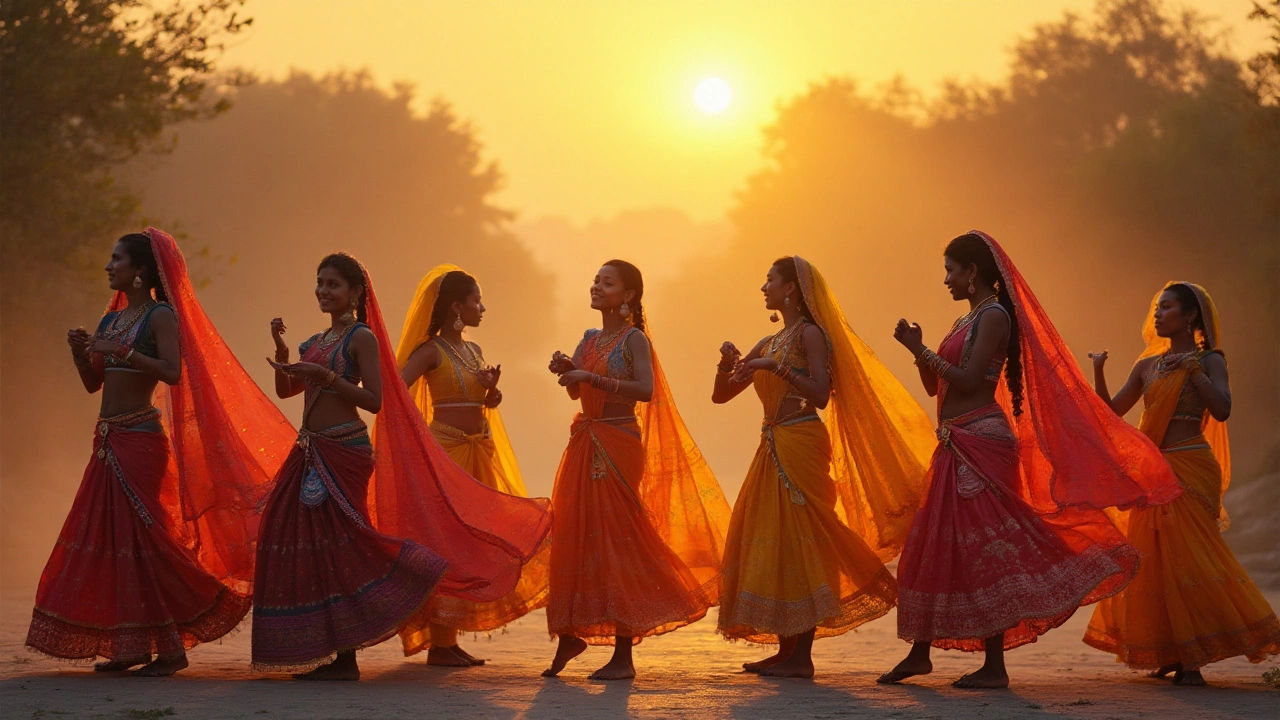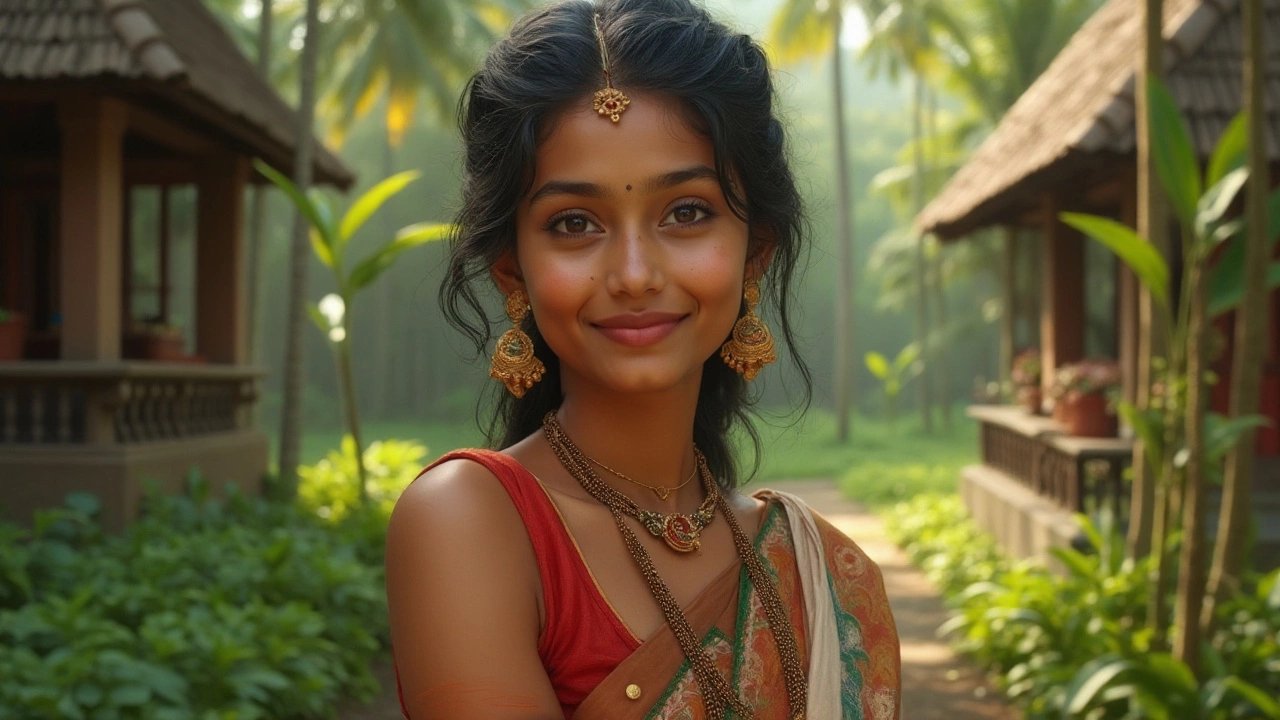SEARCH
Discover India's Most Beautiful People and Cultural Heritage


India, a land where kaleidoscopic cultures meet, captivates not only through its ancient architecture and vibrant traditions but also through the undeniable charm of its people. Each state carries its own tapestry of beauty shaped by history, geography, and culture, offering a unique allure that resonates globally.
In this exploration, we will navigate through Indian states reputed for their beautiful people and how the cultural heritage enriches their allure. The rich tapestry of festivals, traditions, and heritage enhances everyday living, influencing the aesthetics and persona of the residents.
Join us on this engaging journey where we discover how beauty, in its many forms, perfectly coalesces with cultural heritage to paint a compelling portrait of India's captivating demographic and geographic tableau.
- An Overview of India's Cultural Diversity
- Physical Beauty Intertwined with Heritage
- Prominent States Known for Their Stunning People
- Cultural Heritage Sites Enhancing The Beauty
- Preservation and Appreciation of Heritage and Beauty
An Overview of India's Cultural Diversity
India stands as a testament to the notion that there is strength in diversity. With its vast population, it is home to an array of languages, religions, and ethnic backgrounds, forming an intricate mosaic that spans across the subcontinent. People from different regions bring with them their own traditions, dialects, and beliefs, which together weave a dynamic tapestry of national identity. This variety is not just seen in culture but in physical appearance as well, influenced by the varied climates and landscapes each region presents. From the vibrant festivals celebrated differently across states to traditional attire that changes from north to south and east to west, every state seems like a different country. This extraordinary cultural richness doesn't just make India visually stunning; it also makes living here an experience like no other.
Historically, this diversity stems from various waves of migration and trade that introduced new languages and practices to the region. The Indus Valley Civilization, for example, is known for its advanced urban planning and complex societal norms, which laid the foundation for a culture that is both durable and adaptable.
"Unity in diversity is not just a slogan here; it's a way of life," remarked Dr. Amartya Sen, a celebrated Indian economist, summing up India’s cultural complexity.The diversity extends to cuisine as well; from the spice-laden dishes of Kerala to the rich Mughal influences in North Indian food, every state's menu tells a different story. With more than 2,000 distinct ethnic groups and every major religion on the globe practiced here, India’s demographic setup offers a fitting backdrop for its renowned heritage sites.
Languages form another cornerstone of India’s cultural diversity. With Hindi and English serving as the official languages, the country boasts over 19,500 mother tongues spoken across its length and breadth. This linguistic diversity adds another layer to the Indian cultural makeup, with each language being a representation of local history and tradition. Similarly, religious diversity profoundly influences local traditions and festivals, enriching the cultural landscape of the country. Whether it's Diwali, Eid, Christmas, or Pongal, these celebrations bring communities together, reflecting the nation's inclusive spirit.
Beyond the realms of religion and language, India is also home to an extensive range of traditional practices and crafts that have been passed down through generations. From the elegant silk weaving in Varanasi to the intricate art of Pashmina shawls in Kashmir, traditional handicrafts are heavily intertwined with the culture and economy of many states. These crafts are not just a means of livelihood but also a way to preserve, perpetuate, and celebrate each community's inherent cultural identity. With a growing focus on sustainability and cultural preservation, these traditional crafts are gaining recognition on global platforms.
The diversity is also apparent in the architectural styles seen throughout the country. From the Rajasthan forts and palaces that echo the tales of Rajput valor to the Dravidian architectural marvels in the south, every structure is a storybook of India’s past. The distinct stylistic elements serve as a testament to the various dynasties that have ruled over India, leaving footprints of their cultures, beliefs, and artistic inclinations. These architectural wonders not only enhance the scenic beauty of India but also provide important cultural context, attracting tourists from all over the world.
Finally, diversity in India is further enriched by its natural landscapes. From the Himalayan heights to the lush Western Ghats, from the Thar Desert to the soothing beaches of Goa, geographical features across India vary as widely as its culture. This diverse geography dictates lifestyles and habitats, contributing to the cultural nuances observed across different states. Such geographical diversity gives rise to varied climatic conditions which, in turn, influence the lifestyles and the socioeconomic activities in different regions, offering yet another layer of cultural complexity in this mesmerizing land.
Physical Beauty Intertwined with Heritage
The blend of physical beauty with the rich heritage of India is not just a concept but a living reality in many states. The harmony between people and their cultural settings gives rise to unique aesthetics that captivate anyone who visits. When talking about physical beauty, it’s not solely about outer appearance but the charisma and vibrancy that arise from cultural roots. This fusion is evident in various Indian states whose people are often celebrated for their allure, deeply intertwined with their traditions, history, and surroundings.
Kerala, known as “God’s Own Country,” offers an excellent example of this connection. The state is internationally admired for its picturesque backwaters and lush landscapes. Apart from natural surroundings, the locals' laid-back demeanor, rooted in rich traditions, accentuates their charm. The state's Ayurvedic practices contribute to a healthier lifestyle, which reflects in the glowing skin and well-being of its inhabitants. The serene environment combined with spiritual closeness through ancient rituals gives the people a calm and composed elegance that many find captivating.
In Himachal Pradesh, you're met with striking beauty which is a vast amalgamation of Punjabi, Tibetan, and Himachali cultures. The physical appeal of Himachali people is often accentuated by their traditional attire, celebrations, and their connection to nature. The cool climate plays its part as well, contributing to flawless skin, rosy cheeks, and vibrant health—traits often observed in regions with elevated altitudes. A heartfelt link exists here, with the local's attractiveness not being an accident but rather a consequence of embracing their cultural heritage.
When you talk of Rajasthan, the vibrant colors of the state, from the exquisite architecture to the ornate attire, play a pivotal role in enhancing the beauty of its people. Known for its palaces and forts—such as Jaipur's Amber Fort—Rajasthan offers a royal sense of elegance. People here proudly embrace their lineage, whether through traditional dance, music, or festive attire that brings out an enchanting beauty. As a Rajasthani saying goes, "Beauty lies in the heart that dances on the melodies of love and pride," encapsulating the role of culture in physical appeal.
According to renowned cultural historian Dr. Ritu Sharma, "The beauty of Indian states is not limited to scenic landscapes, but vividly showcased in the diverse fabrics of culture and humanity."
A glance towards the northeast, states like Meghalaya highlight distinctive features attributed to a different lineage—often cited for exotic beauty. The Khasi people are known not just for their distinct facial features but for their community-driven lifestyle that creates an engaging and inviting aura. The tribal traditions and strong cultural sense infuse their lives and add another layer of beauty that goes beyond physical traits.
Heritage significantly impacts the beauty of people, offering an appealing synthesis of persona, health, behavior, and aesthetic. This concept underlines the fact that physical beauty is never in isolation but rather, interdependent with cultural heritage, making each individual or group more fascinating and affable. By understanding this intricate interplay, one can truly appreciate India's diversity and the unique context that shapes the way we perceive beauty.

Prominent States Known for Their Stunning People
When we talk about the allure of Indian states, many narratives arise that highlight both the physical beauty as well as the cultural charisma of their inhabitants. Among these states, Punjab stands out prominently. Known for its robust lifestyle and vibrant traditions, the people of Punjab are celebrated for their striking features and energetic demeanor. This energy often translates into a zeal for life, visible in their enthusiastic celebrations of festivals like Baisakhi and their love for lively music and dance forms such as Bhangra and Giddha. The picturesque farmlands and the backdrop of sweeping fields further enhance their radiant beauty.
Rajasthan, with its royal lineage and historically rich tapestry, offers another captivating narrative. The state's inhabitants often reflect the ethos of the Rajputana legacy, with dynamic and expressive features. Rajasthani people are celebrated for their traditional attire, adorned in vibrant turbans and intricately designed jewelry. The connection between their heritage and everyday life makes them exceptionally unique, enhancing their appeal. The state's desert landscape adds to this allure, articulating a blend of stark beauty and vivid culture in each person you encounter.
"The beauty of our people is not just in their appearance, but in the stories that they carry and the traditions they uphold," said Richa Sharma, a cultural historian from Jaipur.
Maharashtra, another state replete with both history and modernity, is home to people whose beauty is as diverse as the state itself. From the cosmopolitan residents of Mumbai to the indigenous communities residing in the Western Ghats, the variety in appearance and cultural influence is striking. The state is also where the timeless elegance blends with contemporary styles, resulting in a unique modern-traditional fusion that's often captivating.
Kerala, known as 'God's Own Country,' adds another dimension to this narrative. The lush greenery, backwaters, and rich cultural heritage influence the aesthetic appeal of the Keralites. Traditional dances such as Kathakali and Mohiniyattam showcase not only their incredible artistic talent but also their unique physical grace. Feast on their vision during cultural festivals like Onam, embodying a gracious blend of simplicity and sophistication.
Finally, West Bengal's residents embody a distinct charm that stems from a long history of intellectualism and cultural richness. The unmistakable beauty of Bengali women often finds expression through their traditional saris, bindi decoration, and luscious long hair. Add to this the intellectual vibrancy, with eminent contributions to literature, art, and cinema, and it's no wonder that the people of West Bengal are admired not just for their beauty but their formidable minds too.
Cultural Heritage Sites Enhancing The Beauty
India’s tapestry is made vivid not merely by its landscapes or vibrant textiles but by the footprints left by centuries of dynasties, emperors, and seers. These legends and stories are whispered through each stone and carving found in the multitude of heritage sites that dot the nation from the peaks of Kashmir to the backwaters of Kerala. The legacy of these structures is deeply entwined with the beauty that graces the people of each region. This blend of historical presence and natural charm paints an exotic picture that speaks volumes of India's rich cultural identity.
The Taj Mahal, perhaps India's most celebrated masterpiece, is a glowing testament to love and architectural brilliance. It’s not just the elegance of its marble domes or the geometric precision of its gardens that stuns visitors. It's the stories it tells about a bygone era and the people it brings together from all corners of the world. Nearby, in Rajasthan, the city of Jaipur, with its fortresses like the Amer Fort, showcases not only the stunning views of rugged hills but also the royal lineage that has contributed to the state’s rich tapestry, enhancing both cultural resonance and beauty.
Beyond the architecture, these sites play a crucial role in framing the identity of the people who reside around them. The artistry of Ajanta and Ellora Caves in Maharashtra is reflected in the creativity found in the local crafts and the everyday life of its residents. The heritage of these areas forms a foundation upon which modern aesthetics stand, giving rise to a unique blend of old and new. This harmonious coexistence of the past and present is what radiates beauty among the people here, where tradition is as dear as modernity.
Varanasi, one of the oldest cities in the world, is adorned not in physical beauty but in the richness of spiritual and cultural heritage, impacting its residents profoundly. The sacred Ganges River, the backdrop for myriad rituals and traditions, weaves a complex cultural fabric giving locals their distinctive personality and charm. A walk along the ghats reveals not just the daily drudges of life but the inherent beauty of tradition, devotion, and discipline that endures through generations.
Within these culturally significant realms lies the underrated beauty of diversity and acceptance thriving amidst differences. The deeply entrenched belief that hospitality is tantamount to divinity, 'Atithi Devo Bhava,' surfaces beautifully where heritage is life. Statistically, India is home to 40 UNESCO World Heritage Sites, the sixth most in the world, which underscores not only the nation's richness in culture and history but also its dedication to preserving this mosaic of beauty for future generations.
Citing Rabindranath Tagore, a Nobel laureate in literature, he envisioned the beauty of India as "not merely in her landscapes but the smiles of her habitants whose hospitality is unparalleled."
The beauty of India’s people is inseparable from their surroundings, the irony of poverty resting against extravagant opulence, the dance of seasons that bring life and festivals to every corner. It is this intricate balance between celebrated sites and the beauty they inspire in people, where the true essence of India's allure lies. It is much more than the visual aesthetics; it is the soulful richness, the history interwoven with life, transcending time.

Preservation and Appreciation of Heritage and Beauty
Across the vibrantly diverse tapestry of India, the landscapes are not the only elements deeply rooted in history; the traditions and customs, having been carried and refined through centuries, continue to shape the daily lives and appearances of people. The radiant beauty of the individuals in each state isn't merely a reflection of physical attributes but an embodiment of deeply ingrained cultural values and practices. As we delve into the concept of preserving heritage and appreciating beauty, we realize that both visual appeal and cultural richness are intertwined, contributing to the alluring charm of India's people. It is crucial to acknowledge the active effort required in safeguarding these precious legacies, as modernization and rapid urbanization often leave historical and cultural elements vulnerable to erosion.
One potent way of preserving such beauty lies in celebrating local artisans and craftspeople. These talented individuals have inherited skills passed through generations, skills that dictate not only artistic creations but also influence the fashion and lifestyle of local populations. For instance, the intricate art of Kanchipuram silk weaving in Tamil Nadu not only produces stunning attire but also has a significant influence on the elegance of the people who don them. Such crafts, however, require nurturing and promotion in both local and global markets to endure. Ensuring fair compensation and recognition can incentivize the continued practice and transmission of these age-old skills.
The Indian government and various non-profit organizations emphasize sustaining heritage by promoting tourism around historic locations, thus naturally attracting attention to the traditional aesthetics of these areas. Heritage tourism acts as a dual boon, often reviving local economies while fostering nationwide pride and international curiosity. Notably, the Archaeological Survey of India plays a pivotal role in protecting scores of ancient monuments. Their work maintains the grandeur of sites such as the Taj Mahal or the temples of Khajuraho, allowing these spectacles of profound beauty to stay open to the world, facilitating cross-cultural admiration and inspiration.
"The cultural heritage of a country is both a reflection of its past and a mirror to its future. It deserves not just to be looked at but deeply appreciated." – A noted cultural historian.
This intertwining of cultural heritage preservation and the appreciation of beauty extends to indigenous textiles, traditional cuisine, and the vibrant, meticulous festivals celebrated with fervor and loyalty to regional identities. Cultural treasures, like the breathtaking embroidery from Kutch or the monumental statues of Ellora, carry their stories through generations, intertwining the aesthetics of the past with the vitality of the present. Safeguarding these treasures ensures continued public engagement and education, highlighting the relevance of history in shaping modern sensibilities.
Technology, surprisingly, offers new avenues for preservation and sharing. Digital archives and virtual tours can bring far-flung global audiences into the heart of India's cultural landscapes without stepping foot on the soil, encouraging a worldwide appreciation that sparks conservation funding and practices. Additionally, social media and digital marketing can enhance indigenous artistry's reach, providing platforms for local artists to gain international recognition and appreciation, underlining how beauty and heritage can harmonize with advancement.